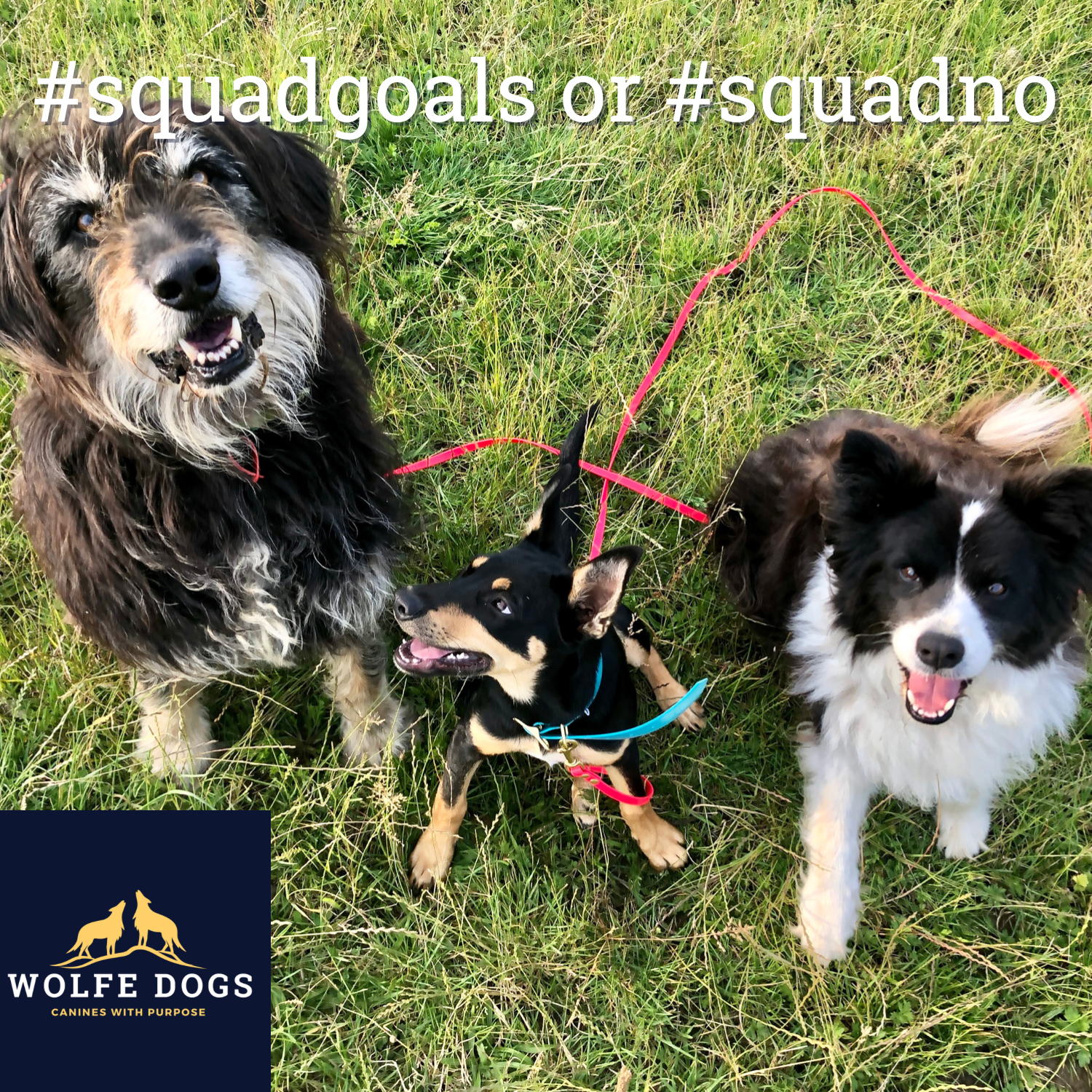Adding a new dog or puppy to the family
So you’ve got one or two dogs and want to add another. What do we need to think about first?
The first thing to remember is that this will be your dog first and foremost. It’s not your original dogs job to teach or entertain the new puppy. Often the second dog ends up being the hell hound, and not due to any fault of their own. It’s classic second child syndrome. The first pup got the undivided attention during their puppyhood, but when it comes to the second one owners are often a bit more relaxed, slotting in training where it fits and expecting the dog to learn from the first dog rather than getting that individual focus they really need. This leads to bad habits creeping in, and sometimes conflict when the first dog is expected to correct the first pup etc rather than owners advocating for each individual. Set them up for the success they deserve with plenty of structure and get the training sorted before giving them too much free time together.
How much of a gap should we leave?
I suggest waiting until your first dog is fully mature and under good control before adding another. Having two pups close in age can contribute to a variety of issues under the umbrella term “littermate syndrome”, including attachment issues with each other where one pup becomes very withdrawn, aggression issues, struggling to bond with humans etc. With appropriate management and training this can be avoided to an extent but it’s a headache most pet owners don’t need to deal with. At the other end of the scale, if you have an elderly dog consider if they really need the stress of a puppy in their golden years. And you know if your first dog has behavioural challenges, there’s a very good chance that your new pup will pick them up too.
Does the sex matter?
Often we suggest your second dog being the opposite sex to the first to reduce the risk of same sex conflicts. A lot of this is personality dependent though, and I’ve had a lot of each co-existing quite happily in the same household. You know your dog and what other dogs they tend to get on with well.
How about breed?
It can be really helpful if your new pup is likely to have a similar play style to your first. Herdy dogs tend to get on better with other herdy dogs of similar varieties, bully breeds often enjoy similar games to other bully breeds, and a small dog is likely to get on better with another little dog than something huge and intimidating. It can also be helpful to have something that balances out your other dog temperamentally eg if your first dog is a bit on the full on side, adding another full on dog might be more challenging than something a little more mellow that won’t feed into that energy. But again - it comes down to the individuals involved. With appropriate management and training (which is what a lot of multi dog life comes down to!), most social dogs can get on just fine.
Above all, make sure you’re adding the new dog because you want the other dog and not to entertain your existing dog, compensate for behavioural issues that really should be addressed directly or earn cool points on Instagram. Having multiple dogs is a lot of fun, but it does become more of a lifestyle than them slotting easily into yours, and does complicate things like going away, escalate behavioural issues more quickly & obviously cost more both monetarily and in terms of time being divided between them. Make sure you’re all fully on board before making the leap - I think enjoying life with just one or two good dogs at a time is often vastly under rated. Most dogs are pretty content having their humans to themselves.
__
Multi dog living is very close to my heart, having been in it from day 1 with 3-12+ dogs at any time. If you’ve got questions or would like to set up a training consult to discuss your current or future dog situation, jump on to the training page for details.

